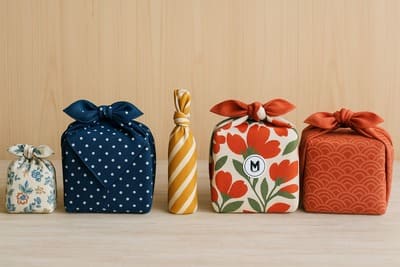
Have you ever heard of furoshiki, a unique Japanese cloth?
These square pieces of fabric have been used for various purposes since ancient times, ranging in size from small ones measuring less than 20 inches (about 50 cm) to large ones exceeding 50 inches (about 130 cm).
Along with tenugui (hand towels), furoshiki is considered a quintessential symbol of Japanese fabric culture and has been deeply rooted in daily life for centuries.
The cloth’s surface is often adorned with traditional Japanese patterns, making it easy to incorporate a touch of Japanese style into your daily life.
Furoshiki is also available at reasonable prices, so why not get one to connect more deeply with Japanese culture?
1. What is Furoshiki?
A furoshiki is typically a square piece of cloth. Its primary use is to wrap and carry items, though its size can vary greatly depending on the intended purpose. Some furoshiki can even exceed 50 inches.
The material is usually cotton or silk. Some inexpensive furoshiki are made from polyester, but these are not recommended, as their knots can easily unravel, potentially causing unexpected accidents.
A small 20-inch furoshiki is commonly used to wrap a lunch box.
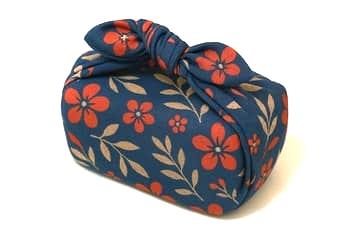
A furoshiki as large as 50 inches can be used as a full-fledged replacement for a bag.
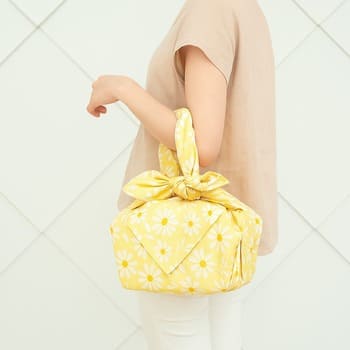
As mentioned below, furoshiki can also be used as tissue box covers, to wrap wine bottles as gifts, or, if they feature beautiful patterns, they can be displayed on the wall as a tapestry.
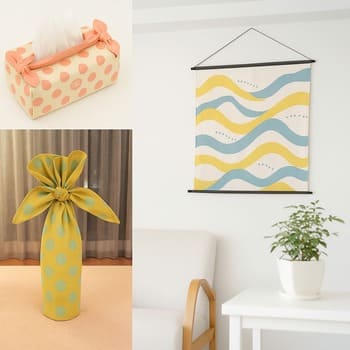
2. History of Furoshiki
The origin of furoshiki can be traced back to the Nara period (700s A.D.), but the modern term furoshiki is believed to have become widely used during the Muromachi period (1300s–1500s A.D.).
In Japanese, “furo” refers to a bathroom or, in a broader sense, an onsen (hot spring).
The word “shiki” means something to lay down.
Originally, furoshiki referred to a cloth placed on the ground during a bath.
In ancient times, people would wrap their clothes in this cloth before bathing and use it as a mat to change on afterward.
From then until today, furoshiki has been used for a wide variety of purposes.
3. Furoshiki in the Modern Age
With the spread of Western-style clothing and bags, the use of furoshiki has unfortunately become less common among the general public today. In particular, its traditional use for carrying items by wrapping them is now almost exclusively limited to occasions when wearing Japanese clothing, such as kimono.
However, in recent years, furoshiki has been rediscovered in Japan as a fashionable and eco-friendly item. It is now often used as an eco-bag or a small handbag for casual outings.
Once nearly forgotten, furoshiki is now being embraced again by the Japanese as a timeless and practical tool, reflecting the changing times.
4. How to Use Furoshiki
Furoshiki can be used in many different ways, and how you use it is entirely up to you. Here are five of the best ways to make use of it.
We have also provided links to reference videos for each method. If any of them interest you, feel free to check them out.
(Note: The recommended sizes are approximate and provided for reference only. The explanations in the videos are in Japanese, but you should be able to follow along just by watching the movements.)
Essential Skills
Furoshiki can be used in many ways, but one essential skill applies to most of them: the Ma-Musubi knot.
This knot is used in almost every furoshiki wrapping technique, so it’s worth mastering.
It’s incredibly simple—you can learn it effortlessly just by watching the video.
<Caption>
- When wrapping bento boxes or gifts, are you tying the Ma-Musubi knot correctly? (0:03)
- Correct Ma-Musubi knot (0:12)
- The knot is parallel to the body. (0:26)
- Incorrect knot (0:30)
- The knot is perpendicular to the body. (0:41)
- Shoelaces are also less likely to come undone when tied using a Ma-Musubi knot. (0:52)
Left: Ma-Musubi knot
Right: Not Ma-Musubi knot
4-1. Tissue Box Cover
Wrapping a tissue box in a furoshiki is a simple yet elegant way to add warmth and style, turning an otherwise plain item into a seamless part of your interior decor.
Recommended size: 18″ to 30″ (46 cm to 76 cm)
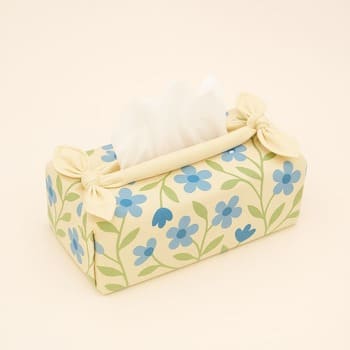
4-2. Wine Bottle Wrapping
You may want to send a bottle of wine as a thank-you gift to a close friend or someone who has taken care of you. Wrapping it at the store where you purchased it is fine, but putting in a little extra effort by wrapping it in a furoshiki cloth that complements the wine bottle will surely make it a more appreciated gift.
Recommended size: 26″ to 28″ (68cm to 72cm)
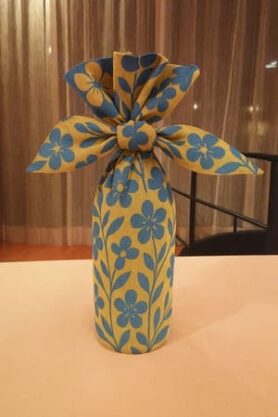
4-3. Fashionable Small Handbag
For those who want to express their own personal fashion style, something that cannot be achieved with commercially available bags, this is the perfect choice.
If you’re traveling to Japan, wouldn’t it be wonderful to carry this bag while exploring? It will help you feel more connected to Japanese culture.
Recommended size: 18″ to 30″ (46cm to 76cm)
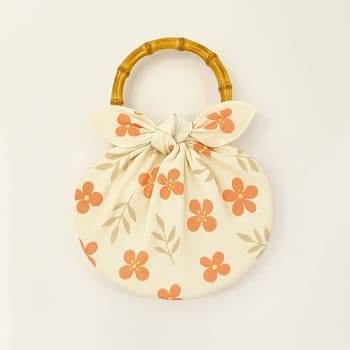
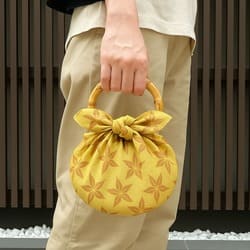
4-4. Eco-bag
While environmental consciousness is now taken for granted, that doesn’t mean you have to sacrifice a sense of style and excitement.
If you keep one of your favorite furoshiki in your regular bag, you can quickly wrap up your extra belongings when needed. This way, you might even forget about the weight of your luggage.
Recommended size: 26″ to 41″ (68 cm to 105 cm)
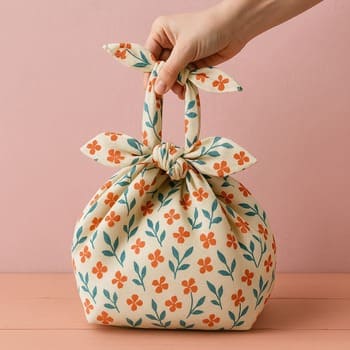
4-5. Interior Decoration (Tapestry)
If you have a favorite pattern, using a furoshiki as a tapestry is a great way to incorporate a touch of Japanese style into your interior design.
(If you plan to use it as a tapestry, specialized hanging tools, sold separately, may be more convenient.)
Recommended size: None in particular
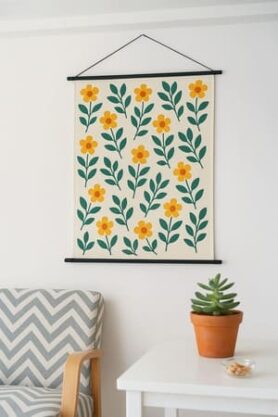
5. Where to Buy a Furoshiki
Here are some recommended places to buy high-quality furoshiki.
We have excluded hundred-yen stores and discount shops, as their products, while inexpensive, are generally of lower quality and not recommended.
5-1. Gofukuya
Gofukuya are stores that specialize in various items related to Japanese kimono, such as kimono, obi, and geta. Most well-established kimono shops are located in Nihonbashi (Tokyo) and Kyoto.
These stores offer top-quality furoshiki made of silk, but they are usually quite expensive, ranging from tens to hundreds of dollars, and can be difficult to access.
If you are looking for the highest quality, kimono shops are your best option.
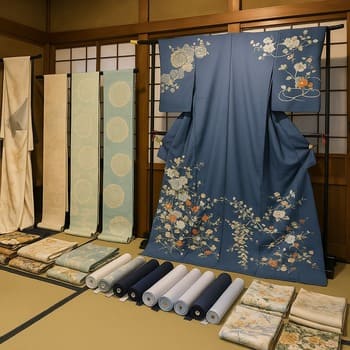
5-2. Department stores
Some department stores have branches of the gofukuya mentioned above. However, as with standalone kimono shops, their products tend to be expensive.

5-3. Souvenir shops
You can also find furoshiki at souvenir shops. While the selection may be limited, they are often available at reasonable prices.
However, keep in mind that not all souvenir shops carry furoshiki.
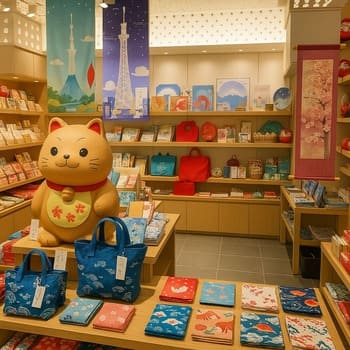
You might also like:
🎁 20 Light and Unique Japanese Souvenirs That’ll Make You Say ‘I’m Glad I Got This!’
😲 How to Choose a Japanese Sensu (Folding Fan) – A Lightweight and Stylish Souvenir
🎁 11 Unusual & Creative Japanese Souvenirs for Travelers Who Want Something Different


